7 Effective Employee Engagement Case Studies and Strategies for a Productive Workplace
.png)
- Understanding Employee Engagement: Definitions That Matter
- Acknowledgment and Appreciation: The Foundation of Engagement
- Emphasis on Employee's Holistic Wellness
- Development-Focused Initiatives: Investing in Career Growth
- Develop a Sense of Purpose, Values & Mission
- Maintain Transparent Communication Channels
- Create Conducive Working Conditions
- Create Space for Fun & Happiness
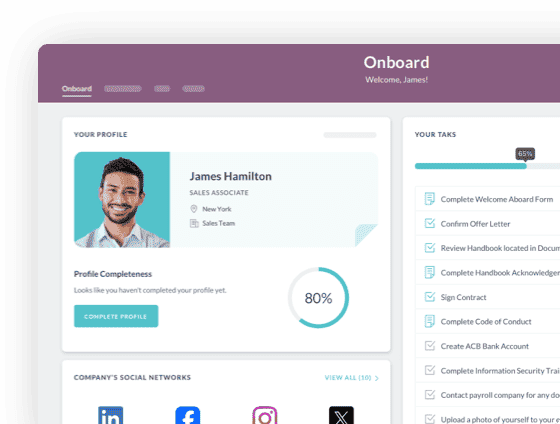
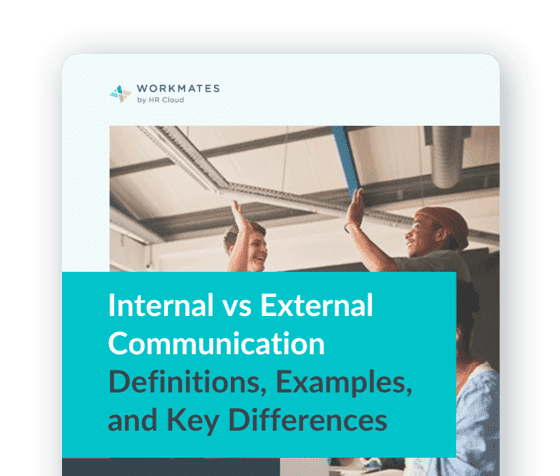
 Cut onboarding time
by 60%—here's the
Ultimate Checklist
that helped do it.
Cut onboarding time
by 60%—here's the
Ultimate Checklist
that helped do it.
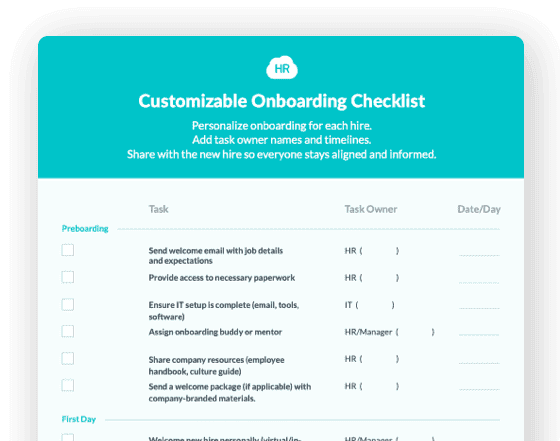
Employee engagement isn't just an HR buzzword—it's a business imperative that directly impacts your bottom line. Organizations with highly engaged teams see 21% higher profitability and 41% lower absenteeism. If you're searching for proven employee engagement strategies backed by real-world case studies, you're in the right place.
This comprehensive guide explores seven research-backed engagement approaches with concrete examples, measurable outcomes, and tactical implementation steps. You'll discover how leading companies transformed their workplace culture using recognition programs, wellness initiatives, development pathways, and communication strategies that actually work.
Understanding Employee Engagement: Definitions That Matter
Before diving into strategies, let's establish what employee engagement truly means. While many organizations use vague definitions, leading companies understand engagement as a measurable commitment.
Johnson & Johnson defines it as "the degree to which employees are satisfied with their jobs, feel valued, and experience collaboration and trust. Engaged employees will stay with the company longer and continually find smarter, more effective ways to add value to the organization." This definition emphasizes both emotional connection and business outcomes.
Nokia Siemens describes employee engagement as "an emotional attachment to the organization, pride and a willingness to be an advocate of the organization, a rational understanding of the organization's strategic goals, values, and how employees fit, and motivation and willingness to invest the discretionary effort to go above and beyond."
These definitions share common threads: emotional connection, understanding of purpose, and willingness to contribute beyond minimum requirements. Modern employee engagement platforms enable organizations to measure and improve these dimensions systematically through recognition, communication, and feedback tools.
1. Acknowledgment and Appreciation: The Foundation of Engagement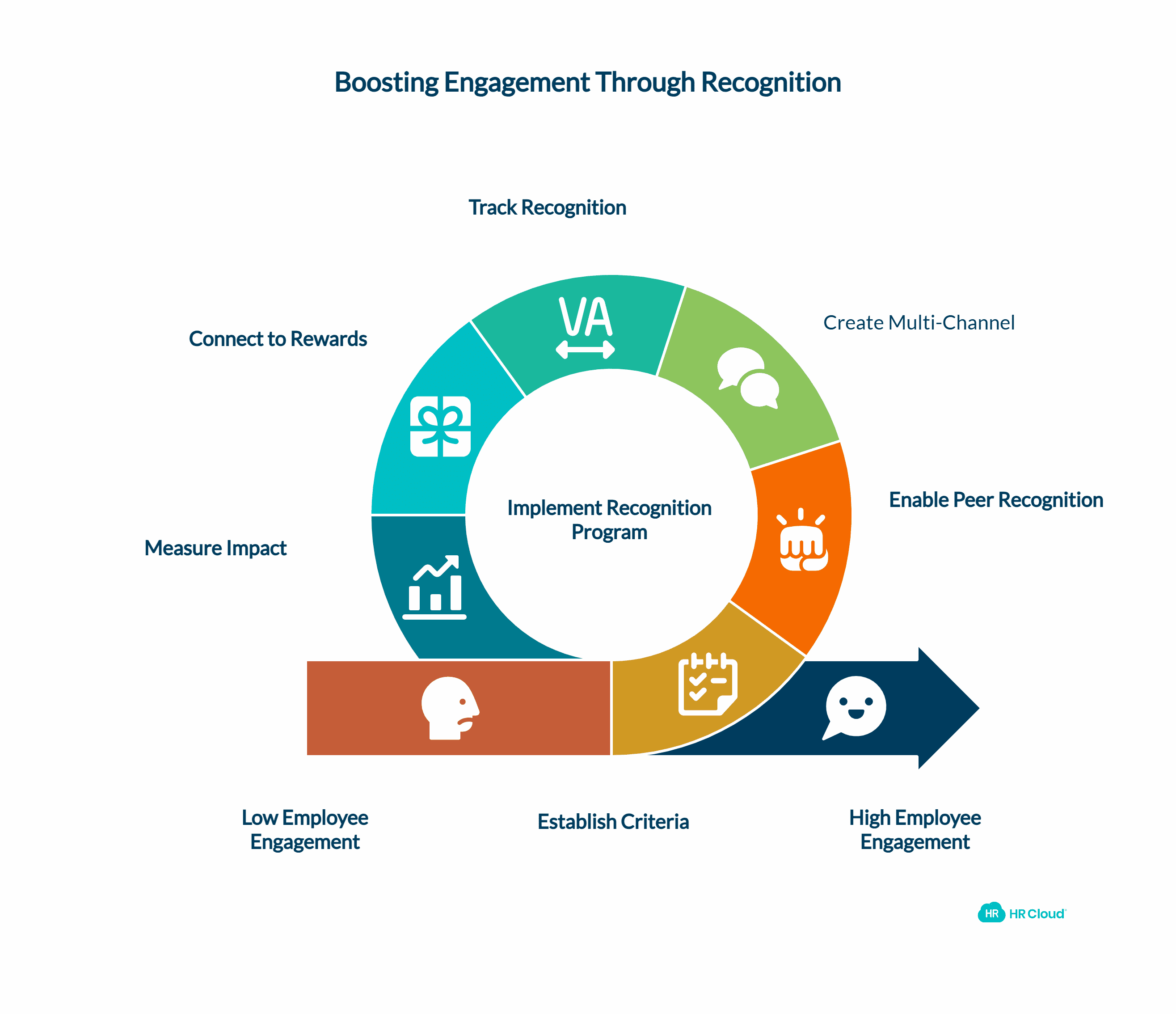
Why Recognition Drives Performance
Employee recognition isn't a nice-to-have perk—it's a strategic business driver. Research shows that 84% of highly engaged employees received recognition the last time they excelled, compared to only 25% of disengaged employees. More strikingly, employees who don't receive weekly recognition are twice as likely to leave their organization.
Making employees feel valued, acknowledged, and appreciated directly motivates employees to become more productive, stay focused on tasks, and perform at higher levels. However, effective recognition ideas requires understanding individual preferences—while some employees thrive on public acknowledgment, others prefer private appreciation.
Case Study: The Power of Personalized Recognition
According to a study, social workers in a company received personalized letters of recognition at their home addresses. Researchers randomly selected workers, with half receiving letters and the other half serving as a control group.
Each letter contained two components: a positive motivational message selected from several pre-written options, and a personal note of appreciation from their managers addressing specific contributions. One month after the recognition intervention, workers who received letters reported significantly higher feelings of being recognized and appreciated compared to the control group. This translated into measurable improvements in motivation levels, well-being scores, and job satisfaction.
Implementation Framework for Recognition Programs
Modern employee recognition software makes systematic appreciation scalable across distributed workforces:
Establish Recognition Criteria: Define what behaviors and outcomes deserve recognition aligned with company values. Create clear categories like customer service excellence, innovation, teamwork, and mentorship.
Enable Peer-to-Peer Recognition: 35.7% more financial impact comes from peer recognition compared to top-down acknowledgment. Implement platforms where employees can recognize colleagues directly with values-aligned badges and points.
Create Multi-Channel Recognition: Some employees prefer public shout-outs in team meetings, others value private written notes, and frontline workers appreciate mobile-friendly recognition they can access during shifts. HR Cloud's Workmates platform enables recognition across all these channels with customizable rewards catalogs.
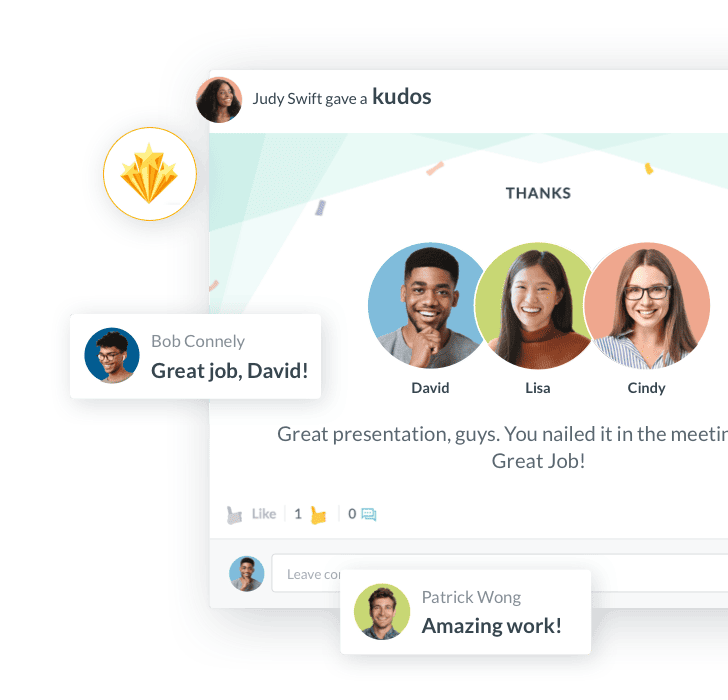
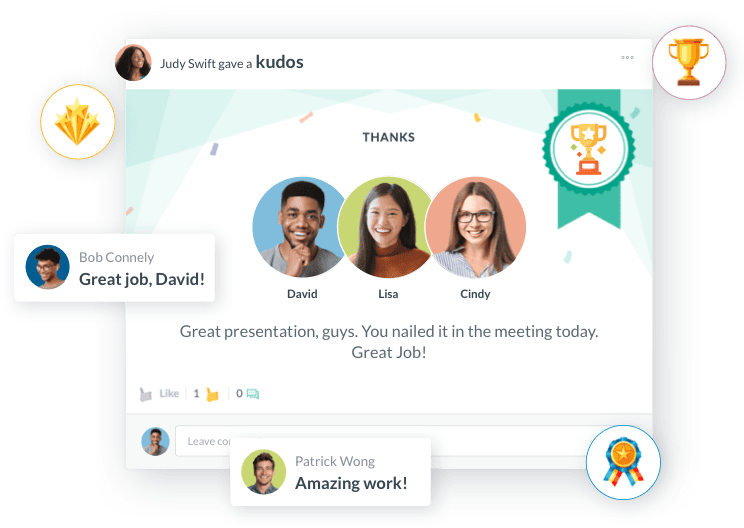
Track Recognition Patterns: Use analytics to identify recognition gaps. Are certain departments, shifts, or locations receiving less appreciation? Are managers recognizing their teams consistently? Data-driven insights prevent recognition blind spots.
Connect Recognition to Rewards: Points-based systems allow employees to accumulate recognition and redeem rewards meaningful to them—from gift cards to extra time off to professional development opportunities.
Measure Impact: Track correlation between recognition frequency and key metrics like retention, productivity, employee NPS scores, and survey responses. Organizations with strong recognition programs see 31% lower voluntary turnover.
2. Emphasis on Employee's Holistic Wellness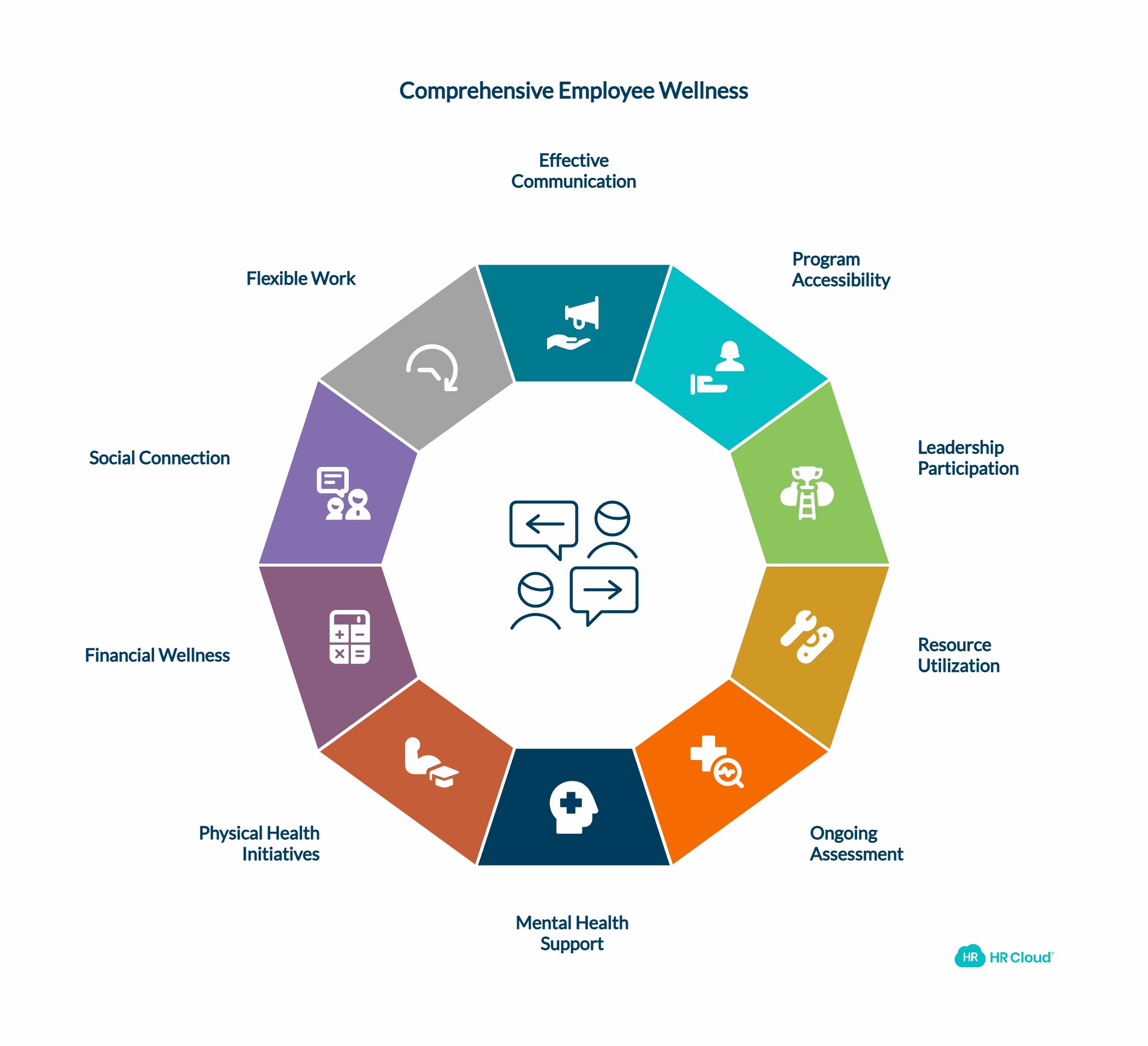
The Business Case for Comprehensive Wellness
Employee wellness extends far beyond offering gym memberships or healthy snacks. True holistic wellness addresses nutrition, work-life balance, mental health, stress management, financial wellness, and social connection. Physically and mentally healthy employees demonstrate 23% higher productivity and take 27% less sick leave.
Organizations that invest strategically in employee wellness see measurable ROI on a study: reduced healthcare costs, lower absenteeism, improved morale, and stronger recruitment brand. However, wellness programs often fail due to poor implementation, limited accessibility, or disconnect from employee needs.
Case Study: Workplace Wellness Program Effectiveness
A comprehensive study published in the National Institutes of Health analyzed workplace wellness programs across multiple organizations to identify success factors. The research explored how wellness initiatives impact employee health, medical expenses, absenteeism, and levels of employee engagement.
The study identified five critical factors that differentiate successful wellness programs from ineffective ones:
Effective Communication Strategy
Organizations achieving high wellness engagement emphasized how programs were communicated to employees. Successful approaches combined in-person interactions, mass information campaigns, and ongoing messaging. They used multiple touchpoints—email, mobile notifications, team meetings, and digital signage—to reach employees where they naturally consume information. Clear, consistent messaging about available resources and their benefits drove higher participation rates.
Program Accessibility
Making wellness programs accessible for all employees regardless of work location, shift schedule, or role proved essential. Frontline workers, night shift employees, and remote team members often couldn't participate in wellness initiatives designed for 9-5 office workers. Organizations with inclusive wellness programs—offering asynchronous options, mobile access, and flexible timing—achieved significantly higher engagement across all employee segments.
Engaged Leadership Participation
Wellness programs succeeded only when senior leadership authentically participated and championed initiatives. When executives shared their own wellness journeys, participated in challenges, and allocated resources for wellness time during work hours, employees took programs seriously. Leadership modeling demonstrated that wellness was a genuine priority, not HR theater.
Effective Use of Existing Resources
Successful organizations leveraged existing resources rather than building wellness programs from scratch. They partnered with health insurance providers, local fitness centers, mental health apps, and community organizations. Building relationships with established wellness providers provided employees with more comprehensive options while optimizing budget allocation.
Ongoing Assessment and Adaptation
Top-performing wellness programs implemented continuous assessment mechanisms. Regular pulse surveys, participation analytics, health metrics tracking, and employee feedback helped organizations understand their employee’s wellness and which initiatives resonated and which fell flat. They adapted programming based on data rather than assumptions about employee needs.
Employee experience platforms like HR Cloud can integrate wellness initiatives into daily workflows, send automated wellness reminders, track participation, and gather feedback—making wellness programs part of organizational culture rather than separate initiatives.
Practical Wellness Program Components
Mental Health Support: Provide access to Employee Assistance Programs (EAPs), mental health days, mindfulness resources, and stress management workshops. Create psychological safety where employees feel comfortable discussing mental health without stigma or career consequences.
Physical Health Initiatives: Offer subsidized gym memberships, standing desk options, ergonomic assessments, walking meeting encouragement, and healthy snack availability. Track participation and outcomes to identify what resonates with your workforce.
Financial Wellness: Money stress significantly impacts employee focus and productivity. Provide financial planning workshops, retirement planning support, emergency savings programs, and student loan assistance where possible.
Social Connection: Combat isolation, especially in remote and hybrid environments, by facilitating social connections. Virtual coffee chats, hobby-based employee groups, volunteer opportunities, and team-building activities strengthen workplace relationships.
Flexible Work Arrangements: Work-life balance remains the top wellness priority for most employees. Flexible schedules, remote work options, compressed workweeks, and adequate PTO policies demonstrate respect for employees' lives outside work.
3. Development-Focused Initiatives: Investing in Career Growth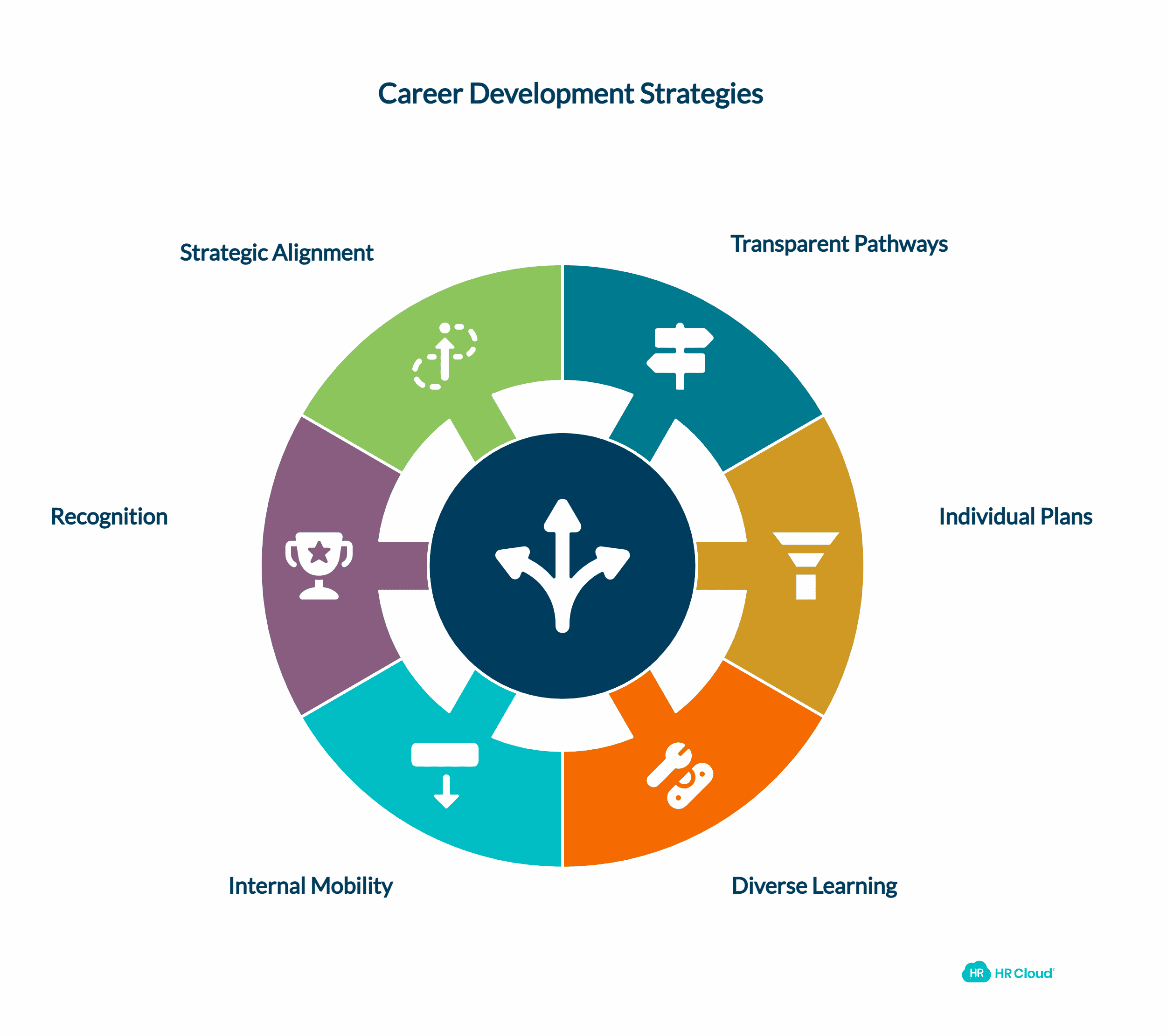
Why Professional Development Drives Engagement
Career development opportunities rank among the top three factors influencing employee engagement and retention. An overwhelming 94% of employees state they would stay longer at a company that invests in their career growth. Conversely, limited development opportunities remain the second most common reason employees leave organizations.
Development isn't solely about promotion pathways. It encompasses skill-building, industry knowledge expansion, networking opportunities, mentorship access, and exposure to new responsibilities. Employees who see clear growth trajectories feel invested in organizational success and motivated to excel.
Modern performance management platforms enable continuous development conversations, goal tracking, skill assessments, and development plan creation—moving beyond annual reviews to ongoing growth enablement.
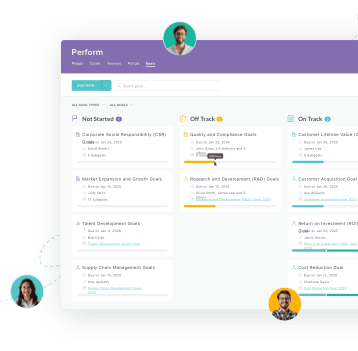
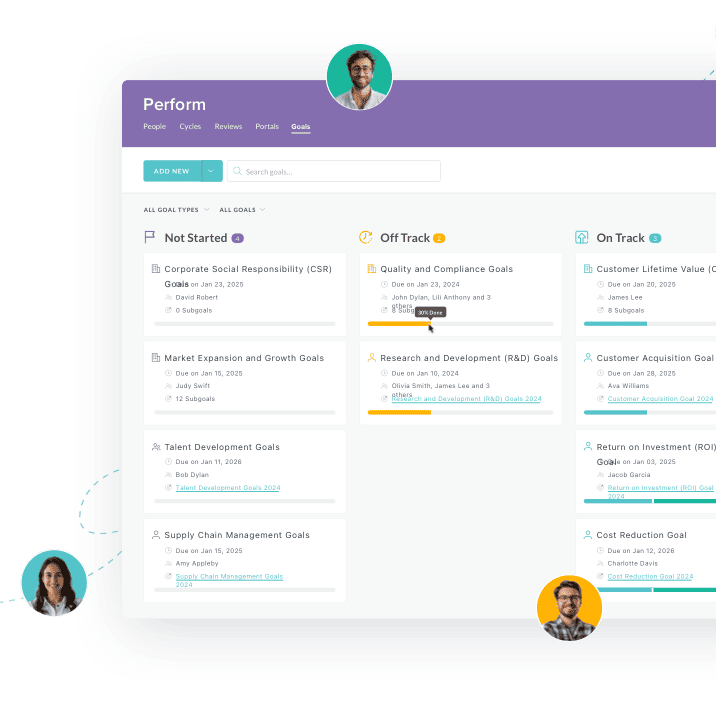
Case Study: Career Growth Impact on Work Engagement
A Study on the Influence of Career Growth on Work Engagement among New Generation Employees examined six companies across consulting, finance, management, and real estate industries. Researchers investigated how career growth perceptions influence work engagement, particularly for newer workforce generations.
The study revealed several critical findings:
Finding 1: Organizational Identification (OI) Mediates Career Growth Impact: Employees' sense of organizational identification—how much they see themselves as part of the company's identity—plays a crucial role in translating career growth opportunities into engagement. When employees believe they can progress within an organization, they develop stronger attachment and identification with organizational goals. This identification then drives higher engagement levels.
Finding 2: Career Growth Positively Impacts Work Engagement: Direct correlation exists between perceived career growth opportunities and work engagement levels. Employees who see advancement possibilities demonstrate higher discretionary effort, better performance, stronger commitment, and willingness to advocate for their organization.
Finding 3: Person-Organization Value Alignment Enhances Both: Person-organization value fit positively influences both career growth perception and organizational identification. When employees' personal values align with organizational values, they're more likely to recognize development opportunities and feel connected to organizational identity.
Strategic Implications: If employees recognize they can make career progress within a company, they feel more attached and this increases employee loyalty, particularly for newer generations. Career visibility motivates employees to improve performance, develop new skills, pursue additional responsibilities, and invest in organizational success rather than constantly seeking external opportunities.
Building Effective Development Programs
1. Create Transparent Career Pathways: Map clear progression routes for different roles. What skills, experiences, and competencies lead to advancement? Ambiguity about advancement criteria frustrates ambitious employees and reduces engagement.
2. Implement Individual Development Plans: Work with each employee to create personalized development plans aligned with their career aspirations and organizational needs. Review and update these plans quarterly, not annually.
3. Provide Diverse Learning Opportunities:
-
Formal Education Support: Tuition reimbursement for degrees, professional certifications, industry courses
-
Internal Training: Skills workshops, lunch-and-learns, knowledge-sharing sessions
-
External Development: Industry conferences, seminars, networking events, professional association memberships
-
Stretch Assignments: Cross-functional projects, temporary leadership roles, problem-solving task forces
-
Mentorship Programs: Pair employees with senior leaders for guidance, perspective, and network access
4. Enable Internal Mobility: Research shows employees promoted internally have 70% likelihood of staying long-term. Create internal job boards, encourage lateral moves for skill development, and remove bureaucratic barriers to internal transfers.
5. Recognize Learning Investment: Celebrate skill acquisition, certification completions, and development milestones publicly. Recognition platforms can award points for learning achievements, reinforcing development as a valued priority.
6. Connect Development to Business Strategy: Help employees understand how their skill development supports organizational objectives. This context makes learning feel purposeful rather than obligatory.
4. Develop a Sense of Purpose, Values & Mission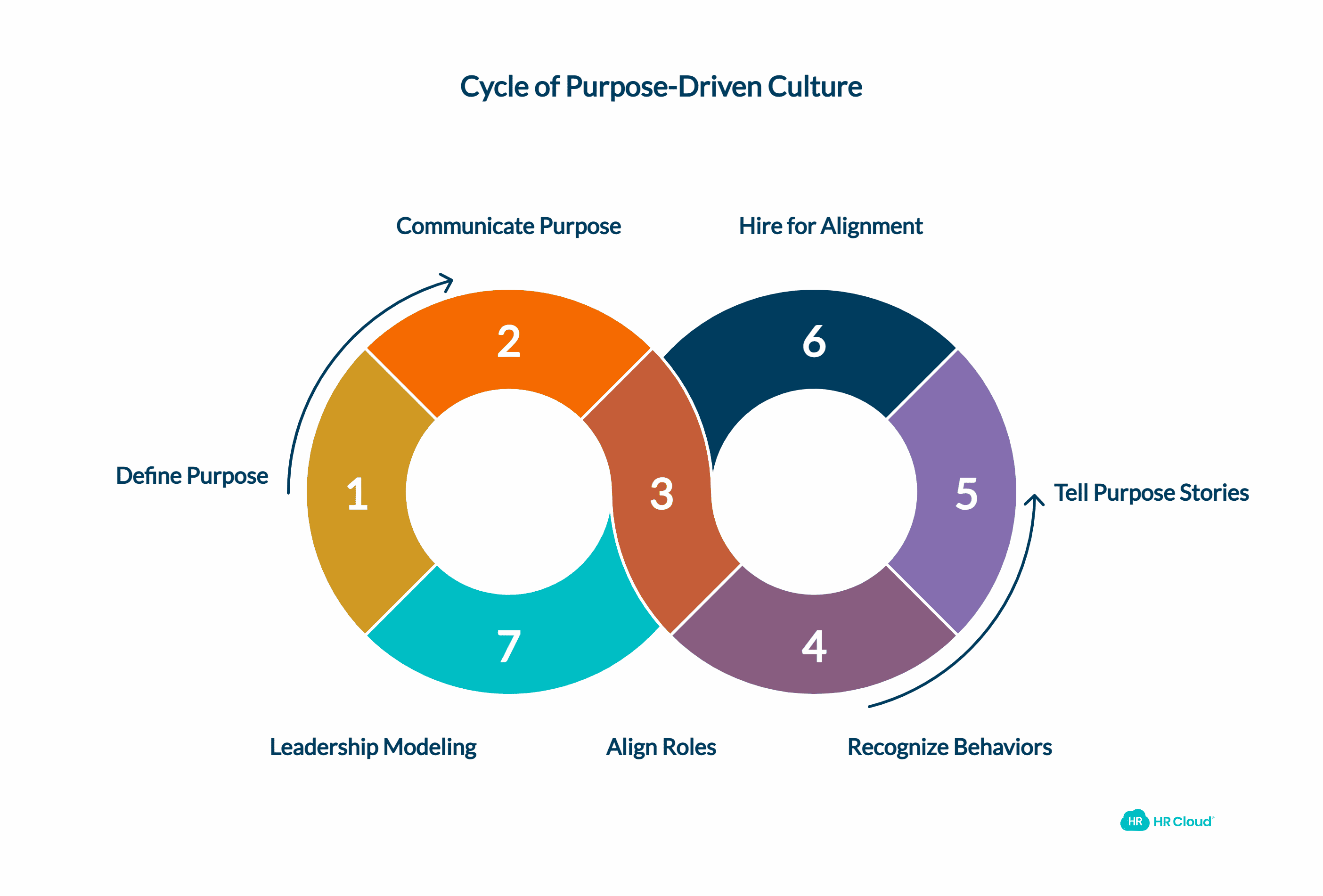
The Power of Purpose-Driven Organizations
Purpose-driven organizations significantly outperform transactional workplaces. Nearly 70% of employees prefer working for organizations with a strong purpose, and 90% report feeling more motivated in purpose-aligned environments. Purpose transforms work from a job into meaningful contribution.
However, purpose, mission, and values often remain empty words on a website unless deliberately woven into daily operations. Employees must understand not just what these concepts mean, but how their specific role advances organizational purpose.
Understanding the Purpose-Mission-Values Triad
Purpose: Why the Organization Exists. Purpose transcends profit. It's the positive impact your organization seeks to make on customers, communities, industries, or the world. Purpose-driven companies are devoted to achieving goals beyond shareholder value—they approach work sustainably, ethically, and with genuine commitment to making a difference. For example, HR Cloud's purpose centers on empowering organizations to create exceptional employee experiences where people thrive.
Mission: What the Organization Aims to Achieve. Mission statements focus on what the company has been built to accomplish. While related to purpose, mission typically addresses specific organizational objectives and strategic direction. Mission answers "What are we trying to accomplish?" while purpose answers "Why does this matter?"
Values: How Work Gets Done. Values act as a compass for organizational expectations and decision-making. They guide how employees approach their work, how managers communicate with teams and partners, and how colleagues interact. Values provide behavioral guidelines that, when genuinely practiced, create consistent culture across the organization.
Case Study: Purpose Impact on Engagement
A Deloitte study examined how company purpose and mission impact both leadership and employee engagement. The research revealed significant disconnects between executive and employee perspectives on organizational purpose:
Finding 1: Purpose Identification Gap: Nearly half (47%) of executives can identify with their company's purpose, while only 30% of employees share this connection. This 17-point gap indicates purpose often doesn't cascade effectively through organizations.
Finding 2: Leadership Example Disconnect: 44% of executives believe exemplary leadership involves setting an example that embodies the company's purpose—but only 25% of employees observe this purpose-driven leadership in practice. Leaders may believe they're modeling purpose while employees don't perceive this commitment.
Finding 3: Purpose Influence on Decisions: 41% of executives assert that purpose plays a significant role in major corporate decisions, whereas only 28% of employees recognize purpose-driven decision-making. This suggests decisions may be framed as purpose-driven at leadership levels but appear purely financial or operational to frontline employees.
Finding 4: Communication Clarity Gap: 38% of leaders claim their company's purpose is communicated clearly and openly to everyone, but only 31% of employees agree. Even well-intentioned communication efforts often fail to resonate or reach all employee segments.
Strategic Implications: Teaching employees about company purpose, mission, and values requires sustained effort and authentic demonstration, not one-time announcements. When done correctly, purpose-driven cultures experience lower turnover, higher engagement, stronger performance, and better talent attraction. Creating genuine purpose alignment demands consistent reinforcement through stories, decisions, recognition, and leadership behavior.
 — Gail Gust, Director of Marketing and Business Development
— Gail Gust, Director of Marketing and Business Development 

Implementing Purpose-Driven Culture
1. Make Purpose Tangible: Connect individual roles to purpose explicitly. How does an accountant, maintenance worker, or customer service representative advance organizational purpose? Create these specific connections rather than generic statements.
2. Integrate Purpose into Onboarding: Effective onboarding programs should immerse new hires in organizational purpose from day one. Share customer impact stories, community contributions, and the "why" behind company existence.
3. Recognize Purpose-Aligned Behaviors: Use recognition programs to reinforce purpose and values. When employees embody company values or advance organizational purpose, celebrate these examples publicly. HR Cloud's Workmates platform enables values-aligned recognition badges that connect appreciation to specific cultural principles.
4. Tell Purpose Stories Regularly: Share customer success stories, community impact examples, and employee contributions that advance purpose. Stories make abstract purpose concrete and memorable.
5. Hire for Purpose Alignment: Assess value alignment during hiring. Employees who naturally connect with organizational purpose require less engagement effort and demonstrate higher intrinsic motivation.
6. Leadership Modeling: Leaders must visibly demonstrate purpose commitment through decisions, resource allocation, time investment, and personal behavior. Employees scrutinize leadership actions for authenticity.
5. Maintain Transparent Communication Channels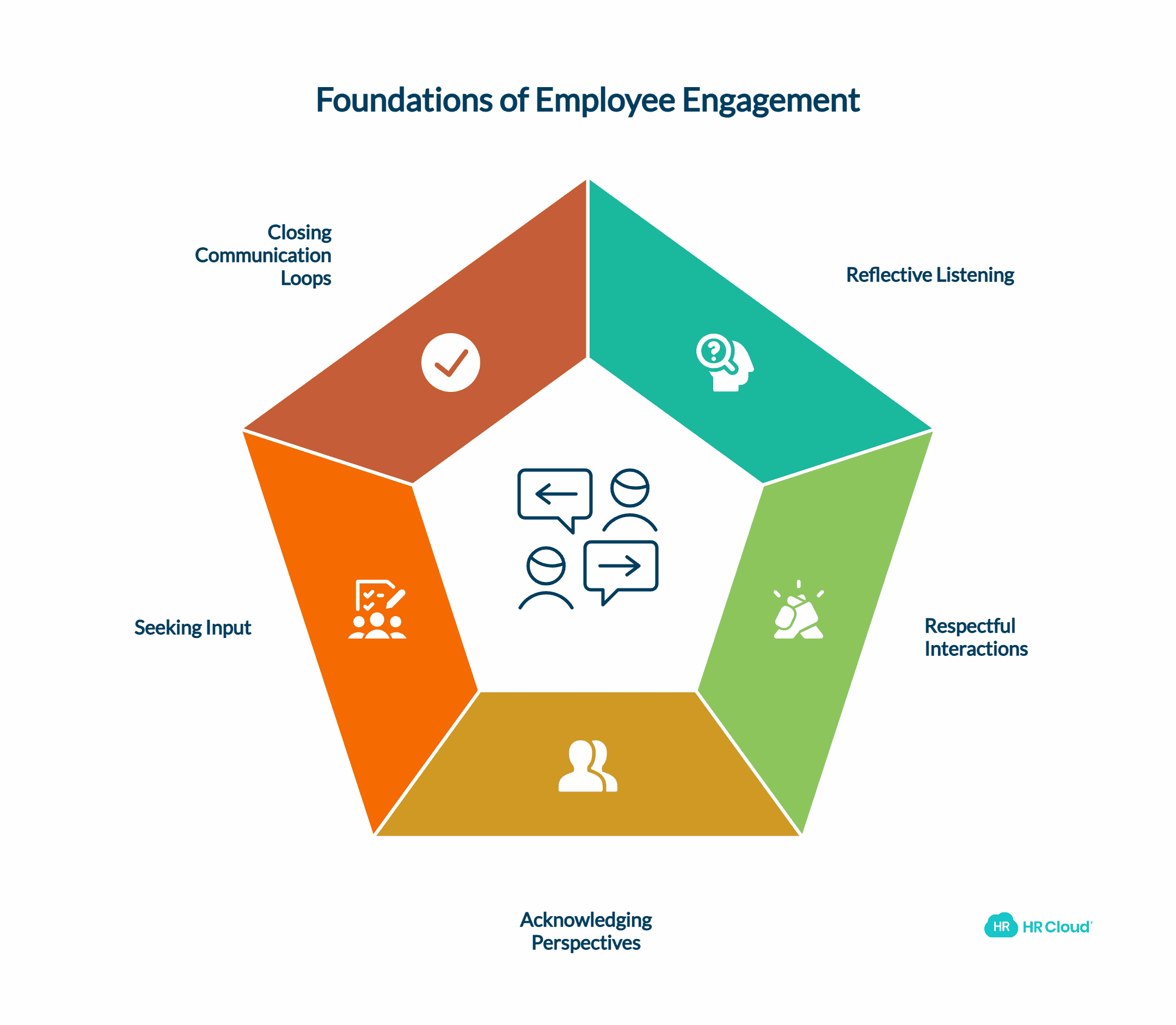
Why Communication Drives Engagement
Transparent communication remains foundational to employee engagement. 50-70% of employees' work perception stems from their direct manager relationship, and communication quality significantly shapes this perception. Employees who trust their organization's communication are 2.5 times more likely to be engaged.
Many employees feel reluctant to share concerns with managers due to perceived indifference, past experiences where concerns were ignored, or fear of negative consequences. However, creating psychological safety where employees freely voice opinions yields significant benefits for both individuals and organizations.
Communication Best Practices
1. Practice Reflective Listening: Managers should focus completely on understanding messages without interrupting, planning rebuttals, or checking devices. Reflective listening involves paraphrasing what employees shared to confirm understanding before responding.
2. Demonstrate Respect: Making employees understand they're respected creates reciprocal respect. This engagement strategy relies on basic human psychology—people mirror treatment they receive.
3. Acknowledge Diverse Perspectives: Recognizing employee viewpoints doesn't require agreement. Acknowledgment means "I hear you, I understand your perspective, and your input matters" even when final decisions may differ. This validation demonstrates respect for diverse ideas.
4. Actively Seek Input: Proactively request employee perspectives on decisions affecting their work. Involvement in decision-making processes significantly boosts job satisfaction even when employees don't get final say.
5. Close Communication Loops: When employees raise concerns or suggestions, follow up on outcomes. Nothing erodes engagement faster than input disappearing into a black hole. Even when suggestions can't be implemented, explain the reasoning.
 — Andrea Bermudez, Organizational & Talent Development Manager
— Andrea Bermudez, Organizational & Talent Development Manager 

Case Study: Communication Impact on Engagement
A research study analyzed communication dynamics between employers and employees and resulting engagement outcomes. The findings supported engagement definitions emphasizing shared responsibility between supervisors and employees.
The study demonstrated that establishing genuine two-way communication—not just top-down information dissemination—yields substantial engagement improvements. Organizations that implemented structured communication protocols experienced measurable increases in employee engagement levels.
Key Findings:
-
Bidirectional Communication: Engagement requires both supervisor-to-employee and employee-to-supervisor communication channels. One-way announcements don't create engagement.
-
Regular Feedback Cycles: Highly engaged team members receive feedback 2.5 times more frequently than disengaged employees.
-
Accessibility Matters: Manager approachability and responsiveness directly correlate with engagement scores.
-
Transparency Builds Trust: Honest communication about challenges, changes, and decision-making processes strengthens employee commitment even during difficult periods.
Building Communication Infrastructure
Modern employee communication platforms provide structure for transparent dialogue:
Company-Wide Updates: Regular all-hands meetings, CEO newsletters, and broadcast announcements keep everyone informed about organizational direction, wins, challenges, and strategic priorities.
Team Communication Channels: Customizable group channels enable department-specific discussions, project collaboration, and peer support. These channels create space for organic communication beyond formal meetings.
Direct Messaging: Private communication options allow sensitive conversations, personal questions, and confidential concerns without public exposure.
Acknowledgment Tracking: For critical announcements, track who has read and acknowledged messages to ensure important information reaches everyone.
Pulse Surveys: Regular, brief surveys gather real-time employee sentiment, concerns, and suggestions. Anonymous options encourage candid feedback.
Town Halls and Q&A Sessions: Live forums where leadership addresses questions, discusses results, and engages directly with employees build trust and transparency.
6. Create Conducive Working Conditions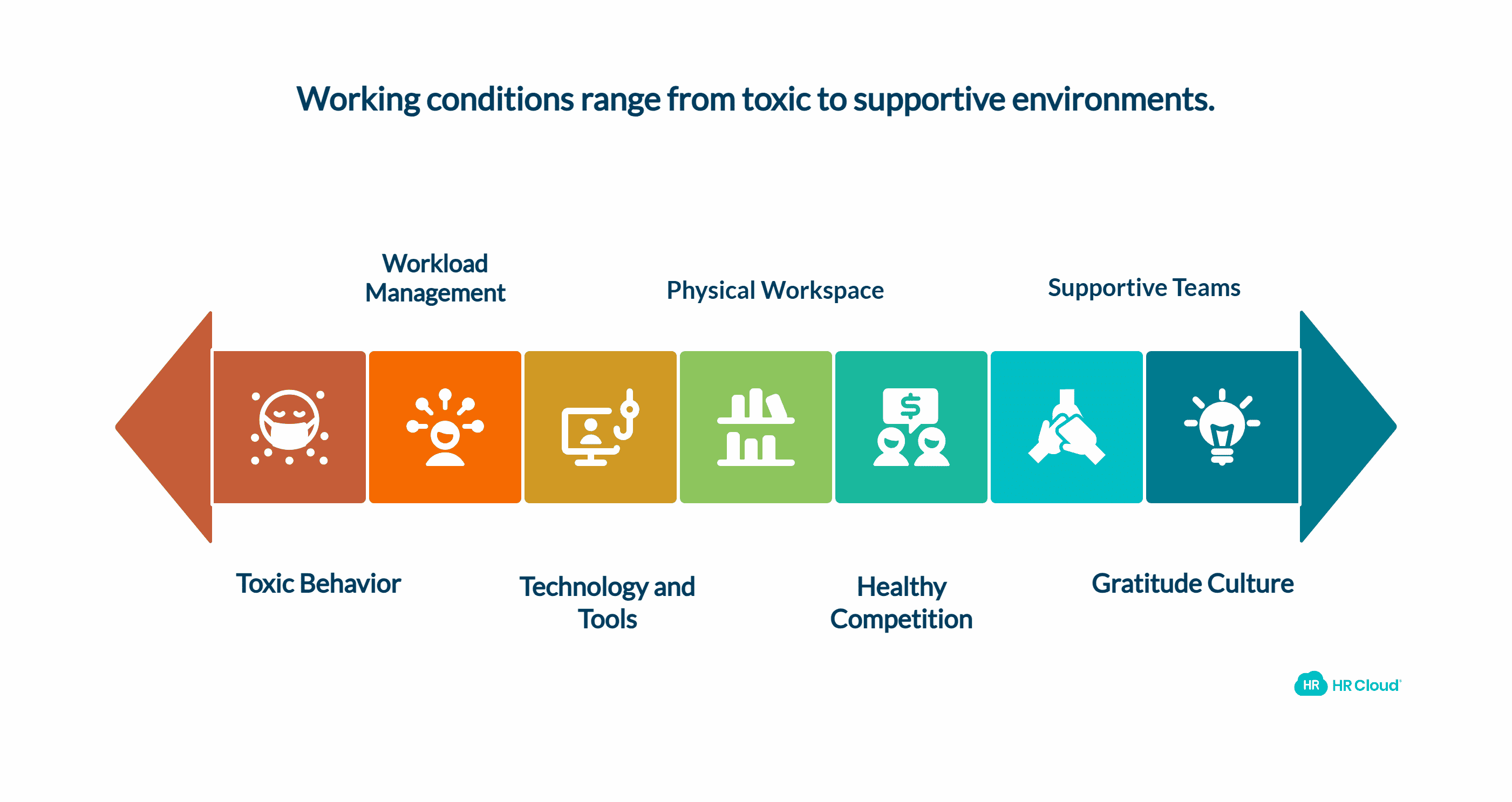
The Environment-Engagement Connection
While expecting high performance from employees is natural, providing conditions that enable success is equally critical. Workplace conditions encompass physical workspace quality, psychological safety, team dynamics, workload reasonability, technology adequacy, and cultural norms.
Research consistently shows that work environment significantly influences engagement, productivity, and retention. Organizations that intentionally design supportive working conditions—both physical and cultural—see measurable performance improvements.
Essential Working Conditions Components
1. Encourage Healthy Competition: Competition can motivate excellence when structured appropriately. Gamification, leaderboards, and performance contests engage many employees. However, ensure competition doesn't become toxic, divisive, or counterproductive to collaboration.
2. Zero Tolerance for Toxicity: Toxic behavior destroys engagement faster than any positive initiative can build it. Establish clear behavioral standards, address violations quickly and consistently, and protect employees from harassment, bullying, and discrimination without exception.
3. Physical Workspace Quality: Clean, well-maintained, ergonomic workspaces signal employee value. Adequate lighting, comfortable temperatures, functional equipment, and thoughtful design impact daily experience.
4. Create Supportive Teams: Team dynamics profoundly affect individual engagement. Foster collaboration, mutual support, and psychological safety where team members feel comfortable taking risks, admitting mistakes, and asking for help.
5. Workload Management: Chronic overwork and unrealistic expectations burn out even highly engaged employees. Monitor workload distribution, resource adequacy, and deadline reasonableness.
6. Technology and Tools: Provide employees with technology, software, and resources needed to excel. Inadequate tools create frustration, inefficiency, and the message that employee time doesn't matter.
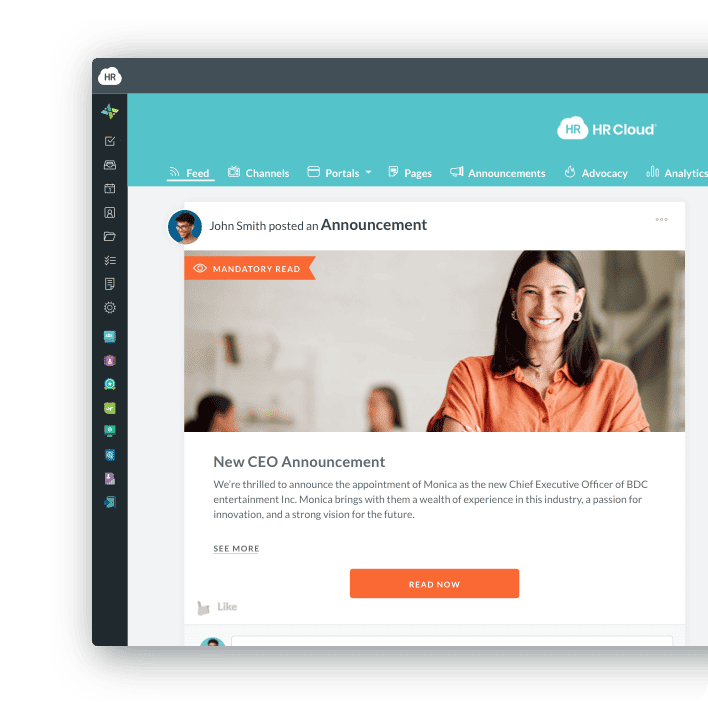
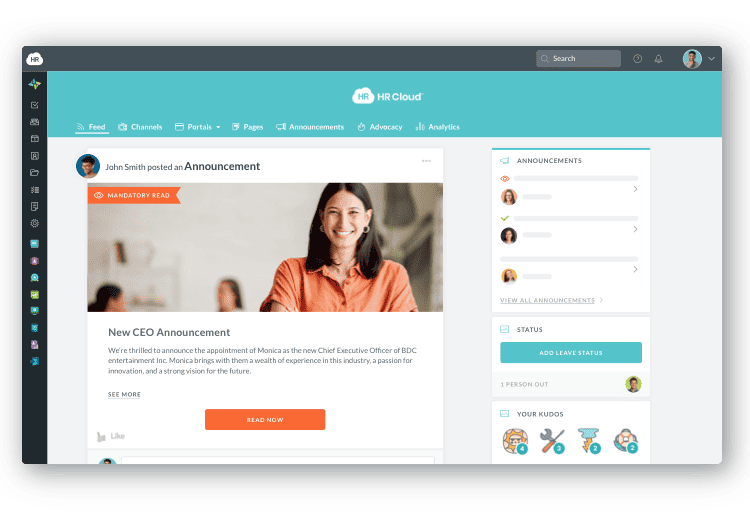
Case Study: Gratitude's Workplace Impact
Consultant Stephanie Pollack has extensively studied gratitude's transformative power in professional environments. Her research and consulting work demonstrate that visible change occurs when organizations encourage employees to recognize good things already existing in their work lives.
Showing gratitude delivers numerous benefits: stress reduction, improved self-perception, stronger relationships, increased optimism, and better physical health. In workplace contexts, gratitude cultures correlate with higher engagement, better teamwork, reduced turnover, and improved customer service.
Building Gratitude Culture: Pollack recommends these practical approaches:
-
Leader Modeling: When leaders regularly express genuine appreciation, employees mirror this behavior
-
Structured Gratitude Practices: Dedicate meeting time to appreciations, implement gratitude journals, or create digital recognition platforms
-
Peer-to-Peer Appreciation: Enable employees to express gratitude to colleagues easily and frequently
-
Celebrate Milestones: Acknowledge work anniversaries, project completions, personal achievements
-
Connect Gratitude to Values: Link appreciation to specific company values to reinforce cultural principles
Creating grateful environments requires sustained commitment, but transformation profoundly impacts organizational health, employee well-being, and business performance.
Practical Implementation Steps
1. Conduct Environment Audits: Regularly assess working conditions through employee surveys, workspace inspections, and team feedback sessions. Identify pain points preventing optimal performance.
2. Resource Allocation: Budget for workspace improvements, technology upgrades, training programs, and support systems. Under-resourcing creates conditions where engagement efforts fail despite good intentions.
3. Psychological Safety Training: Train managers to create psychologically safe teams where employees voice concerns, disagree constructively, and admit mistakes without fear.
4. Recognition Infrastructure: Implement employee recognition systems that make appreciation easy, frequent, and aligned with company values. Technology scales gratitude beyond what individual managers can sustain alone.
5. Measure and Iterate: Track environment quality metrics—employee satisfaction scores, workspace utilization data, technology adequacy ratings—and continuously improve based on feedback.
7. Create Space for Fun & Happiness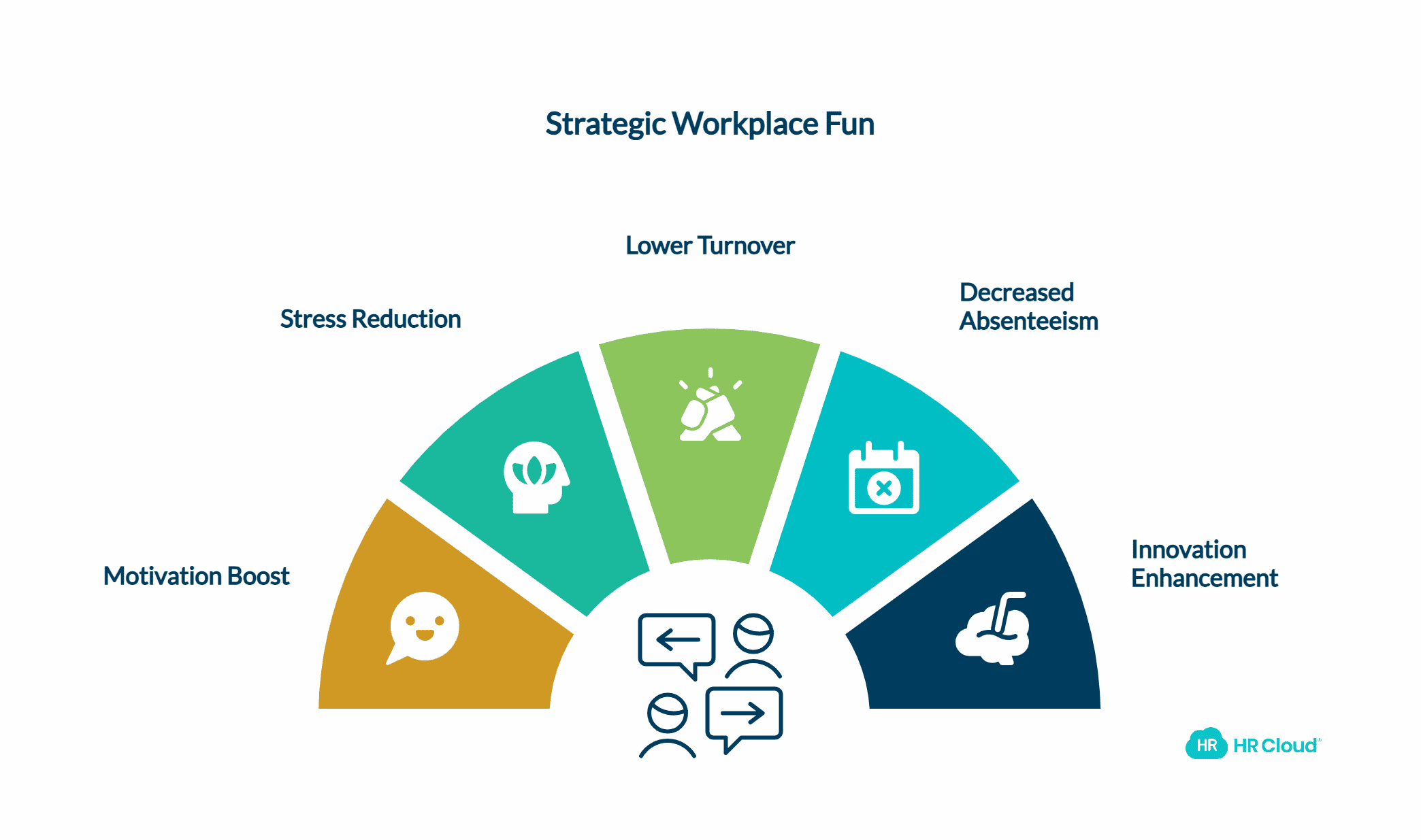
The Business Case for Workplace Fun
Workers content with their jobs demonstrate 13% higher productivity and significantly better engagement than unhappy colleagues. Happiness and fun aren't frivolous—they're strategic business drivers that impact performance, innovation, retention, and customer service quality.
However, creating space for fun doesn't mean neglecting responsibilities or missing deadlines. Successfully balancing work and play requires intentional design that refreshes employees while maintaining productivity and accountability.
Case Study: Workplace Fun's Impact on Engagement
The study "Finding Fun in Work: The Effect of Workplace Fun on Taking Charge and Job Engagement" examined how fun workplace activities influence employee behaviors and engagement levels.
Key Findings:
-
Motivation Boost: Fun at work motivates employees positively, improving job satisfaction, productivity, commitment, energy, and creativity
-
Stress Reduction: Workplace fun helps reduce anxiety, work-related stress, and tension
-
Lower Turnover: Organizations prioritizing fun experience reduced voluntary turnover
-
Decreased Absenteeism: Employees who enjoy workplace environment take fewer sick days
-
Innovation Enhancement: Fun atmospheres encourage creative thinking and risk-taking necessary for innovation
The research demonstrated that fun isn't about constant entertainment or distraction from work. Instead, appropriate fun opportunities create psychological breaks that refresh focus, strengthen relationships, and remind employees that they're valued as whole humans, not just productivity units.
Implementing Fun Strategically
Team Meals and Social Time:
-
Regular team lunches where work talk is optional
-
Coffee or breakfast gatherings for informal connection
-
Virtual coffee chats for remote team bonding
-
Food-based celebrations for achievements
Games and Competitions:
-
Trivia contests with small prizes
-
Department competitions (step challenges, fundraising, creativity contests)
-
Casual gaming tournaments (online or in-person)
-
Quiz shows featuring company knowledge or general topics
Milestone Celebrations:
-
Work anniversaries recognition
-
Birthday acknowledgments
-
Project completion celebrations
-
Personal achievement spotlights (marathons completed, degrees earned, family milestones)
Recreational Activities:
-
Company sports teams
-
Hobby clubs (photography, reading, hiking, cooking)
-
Volunteer days where teams contribute to community causes
-
Creative workshops (painting, cooking classes, music)
Special Events:
-
Quarterly parties or gatherings
-
Annual off-site retreats
-
Holiday celebrations that respect diverse traditions
-
Theme days or dress-up events
Everyday Fun Elements:
-
Humor-appropriate channels in communication platforms
-
Photo sharing of life outside work
-
Pet appreciation days
-
Casual Fridays or theme days
Remote-Friendly Fun:
-
Virtual game sessions
-
Online team challenges
-
Digital show-and-tell
-
Remote trivia or bingo
-
Virtual backgrounds contests
Balancing Fun and Productivity
1. Set Clear Boundaries: Define when fun time happens and when focus time begins. This structure prevents fun from becoming distraction while ensuring it occurs regularly.
2. Make Participation Optional: Not everyone enjoys the same activities. Offer variety and never penalize employees who prefer not participating in social events.
3. Keep it Inclusive: Ensure fun activities don't exclude employees based on abilities, interests, locations, or schedules. Provide options for different preferences.
4. Measure Impact: Track relationship between fun initiatives and engagement scores, team cohesion metrics, and retention rates to validate investment.
5. Budget Appropriately: Allocate resources for fun activities as business investment, not discretionary expense to cut first during challenges.
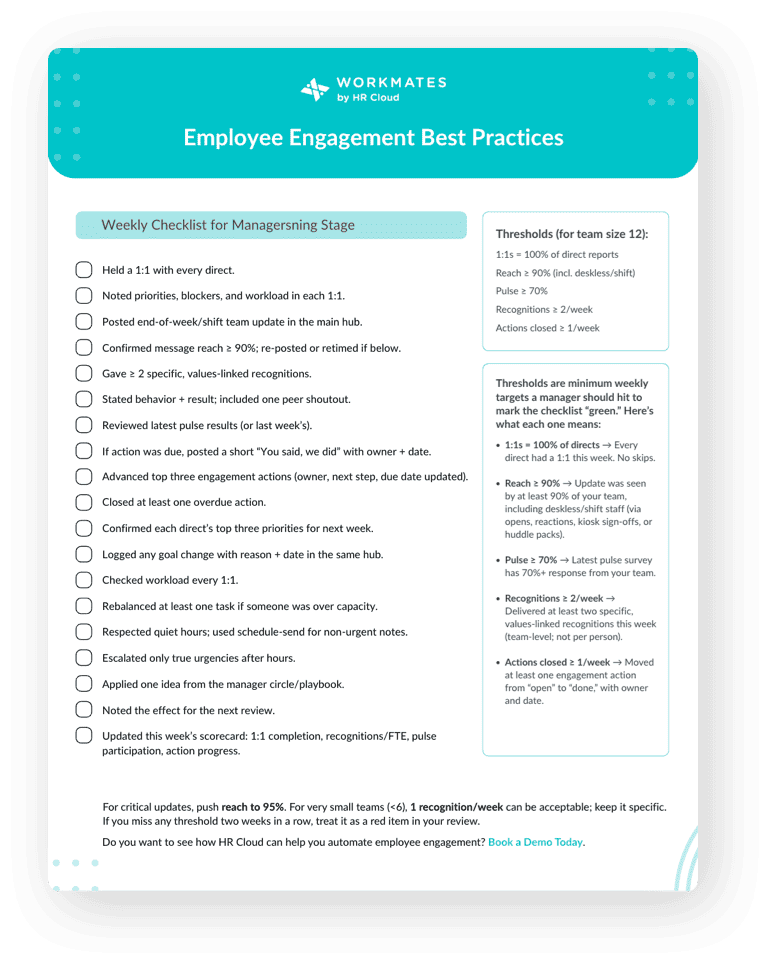
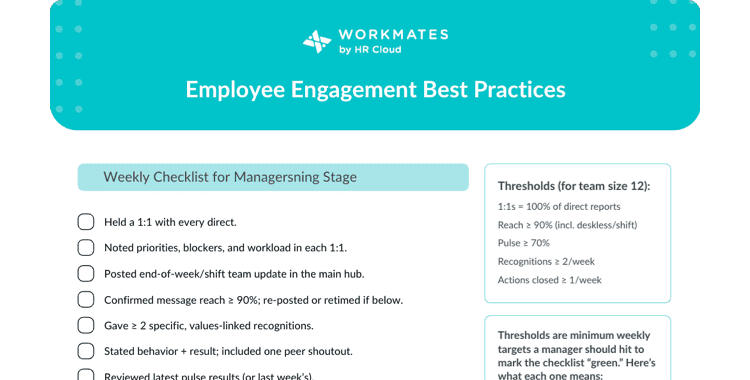
Conclusion: Building Your Engagement Strategy
Improving employee engagement isn't one-size-fits-all. The seven strategies explored here—acknowledgment and appreciation, holistic wellness, development focus, purpose cultivation, transparent communication, conducive working conditions, and space for fun—provide frameworks proven through research and real-world implementation.
Your optimal approach depends on your organization's current engagement challenges, workforce demographics, industry context, and resource availability. Consider conducting employee engagement surveys to identify which areas need immediate attention versus long-term development.
Implementation Priorities:
Quick Wins (Implement within 30 days):
-
Launch peer-to-peer recognition programs
-
Establish regular manager check-ins
-
Create communication channels for team dialogue
-
Start celebrating employee milestones
Medium-Term Initiatives (Implement within 90 days):
-
Develop career pathway documentation
-
Implement wellness program components
-
Establish purpose communication rhythm
-
Create employee feedback mechanisms
Long-Term Transformations (Implement within 6-12 months):
-
Build comprehensive development programs
-
Integrate engagement into performance management
-
Establish metrics-driven engagement measurement
-
Create purpose-driven cultural transformation
Modern employee engagement platforms streamline implementation by integrating recognition, communication, surveys, and analytics in unified systems. Rather than cobbling together point solutions, comprehensive platforms enable cohesive engagement strategies that work together synergistically.
Creating a nurturing, fun-filled, productive workplace makes significant difference for organizational growth and employee thriving. Start with strategies most relevant to your current challenges, measure impact systematically, and expand engagement efforts as you demonstrate ROI.
Ready to transform your employee engagement? Explore how HR Cloud's Workmates platform brings recognition, communication, and engagement tools together in one intuitive solution designed for modern, distributed workforces.

Keep Reading
15 Proven Ways to Create a Healthy Work Environment (2026 Guide)
A healthy work environment is a workplace where employees experience psychological
Best Workday Alternatives for Mid-Market Companies in 2026: Complete HRIS Comparison Guide
"We implemented Workday and our HR team still can't figure out half the features six
Company Culture Software: How to Build a Thriving Workplace in 2026
Ask any business leader what drives lasting organizational success, and you'll hear
Like What You Hear?
We'd love to chat with you more about how HR Cloud® can support your business's HR needs. Book Your Free Demo

Build a Culture of Recognition. Boost Engagement. Guaranteed.
Workmates empowers employees to stay informed, connected, and appreciated—whether they’re on the front line, in the office, or remote. Recognition drives 12x higher engagement.Trusted by industry leaders in every sector




Cut Onboarding Costs by 60%.
Take the confusion and follow-ups out of onboarding with automated workflows, digital forms, and structured portals—so new hires ramp faster 3X quicker.Trusted by industry leaders in every sector




